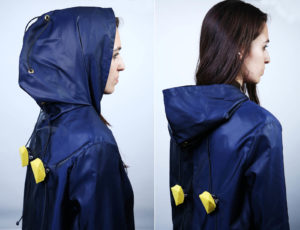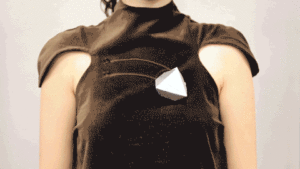
Researchers at the Massachusetts Institute of Technology (MIT) Media Lab are investigating how accessories can be made into mobile, adaptable “assistants.” According to the Media Lab, “Kino” is a collection of jewelry engineered with the functionality of miniature robots that can wander across clothing, change location and reconfigure the garment’s appearance.
“This work explores a dynamic future in which the accessories we wear are no longer static, but are instead mobile, living objects on the body,” the researchers report. Functioning like miniaturized robots, the accessories “roam” on unmodified clothing to change its appearance. For example, cover designs camouflaged with the underlying textile can morph between unique patterns effects.
With the addition of sensor devices, Kino can also actively respond to environmental conditions, and can be paired with mobile devices to become personalized, on-body assistants to help complete tasks. To demonstrate this, the researchers created a coat and connected each drawstring of the hood to a device. Upon detecting an increase in temperature, the devices move downwards to unfold the hood.

In the future, the developers envision that the robots will be “miniaturized to the extent that they can be seamlessly integrated into existing practices of body ornamentation … displaying life-like qualities, learning, shifting, and reconfiguring to the needs and preferences of the wearer.”
The project is a collaboration of scientists and artists from MIT Media Lab, MIT Mechanical Engineering, Royal College of Art and Stanford University’s Dept. of Mechanical Engineering.
 TEXTILES.ORG
TEXTILES.ORG


